One species, one week at a time.
This weekly blog series focuses on a bird species, project, or event that is timely, interesting, and fun! The write-ups alternate between Fair Meadows, Faville Grove, and Goose Pond Sanctuary authors or special guests. Peruse the most recent features below.
Or search by FFF topic:
The 30 most recent Friday Feathered features
Careful study of the Mallard and American Black Duck has allowed me to reliably distinguish them from one another when I get good, clear views of plumage and bill color.
Photo by Gary Shackelford
Although natural cavities can be provided by leaving standing dead trees, the easiest way to supply ample nesting cavities is to build and install songbird boxes.
Photo by Arlene Koziol
After migrating over 2,500 kilometers from the Arctic tundra, Snow Buntings make agricultural fields and burned prairies in Wisconsin their home from now until next April.
photo by Andy Reago & Chrissy McClarren
The birds are slim and dark with black heads, necks, and breasts. Their wings are a light gray and sometimes you can catch a glimpse of white undertail coverts. Black Terns!
Photo by Gary Shackelford
Lapland Longspurs will migrate through and winter in southern Wisconsin, first showing up in late October and departing after the first half of April.
photo by Andy Reago & Chrissy McClarren
This summer, Faville Grove Sanctuary partnered with the Wisconsin DNR as part of the Wisconsin Bat Program to learn more about the bat species using our landscapes and what their presence reveals about our restoration progress.
photo by Andy Reago & Chrissy McClarren
When I looked up, there were now two birds in the sky—the hawk and a smaller bird. What I witnessed next was a once-in-a-lifetime experience.
Photo by Gary Shackelford
Multiple days passed before I realized that the flit out of the corner of my eyes happened way too consistently to be my imagination, so I started paying closer attention.
Photo by Andy Reago & Chrissy McClarren
Earlier this summer, during a botanical field trip into one of Faville Grove Sanctuary’s bogs, one of our interns stopped abruptly. “What is that?” he asked, crouching over a patch of sedges.
photo by Jeff Steele
A flash of yellow and a chestnut necklace catch my eye and there it is—a tiny bird, actively moving along the tips of the foliage in the upper canopy.
Photo by Gary Shackelford
What draws most people’s attention to Chimney Swifts in the fall is their incredible roosting behavior. Chimney Swifts spend 90% of their lives flying—only pausing their lives on-the-wing to roost and to nest. They eat, sleep, and mate while flying. In migration, flocks of Chimney Swifts roost in—you guessed it—chimneys, clinging with their feet to the walls while they sleep.
Photo by Andy Reago & Chrissy McClarren FCC
For three days during my internship this summer, I had the opportunity to conduct bird point counts at Southern Wisconsin Bird Alliance's newly acquired property: Hillside Prairie Sanctuary.
Photo by Mike Budd/USFWS
The elegant Great Egret is one of the most striking birds in Faville Grove’s wetlands—a tall, statuesque hunter clad in pure white feathers, moving with deliberate grace.
photo by Courtney Celley/USFWS
At Fair Meadows Sanctuary, one fact has been made abundantly clear: there is keen competition for nesting sites, both in artificial structures and in tree cavities.
Photo by Gary Shackelford
We asked Goose Pond’s ecological restoration interns what observations or experiences stuck out to them from their summer on the prairie.
Photo by Tucker Sanborn/SoWBA
In spring and summer, over a hundred volunteers give their time, energy, gas money, and hearts to American Kestrels. Why? Because this species is beautiful, fierce, and in decline; and the focal point of our citizen science program the Kestrel Nest Box Monitoring & Banding Program (KNB for short). Each year, hundreds of kestrel chicks fledge from the boxes these volunteers steward, and those chicks and some of the adults are banded for research. And each year, we try to get creative about how we can continue to make it easier for kestrels to successfully raise their young in southern Wisconsin.
Photo by Kaitlin Svabek/SoWBA
It’s one of those cool, misty mornings in late July. I am awakened at 5:30 by a sweet song in the nearby prairie—the paired notes of an Indigo Bunting.
Photo by Gary Shackelford
We are very fortunate to have Red-headed Woodpeckers—our favorite oak woodland and savanna species—at our Wildland cabin year round for the past couple of years.
photo by Jeff Galligan
When I got to see bats up close for the first time at Fair Meadows Sanctuary this past July, I was blown away by their beautiful strangeness.
Photo by Andy Reago & Chrissy McClarren
2025 was another amazing year of dedicated volunteers putting in thousands of hours monitoring the Bald Eagle nests they were assigned to, and documenting the fate of those nests.
Photo by Steve Fisher, BENW volunteer
If you’ve wandered through the prairies at Faville Grove in summer, especially along Prairie Lane, chances are you’ve heard a buzzy, rhythmic “see-see, dic-dic, ciss-ciss-ciss,” ringing from the tops of prairie plants.
photo by Jeff Steele/SoWBA
Typical of this small, fast-moving denizen of the treetops, our gnatcatcher led us to the spot where he and his mate were busy constructing their nest, a compact cup positioned on the top of a limb and resembling a tree knot.
Photo by Gary Shackelford
In 2025, Goose Pond Sanctuary has the best nesting habitat conditions for overwater nesting birds that we have seen since becoming managers in 1979!
USFWS photo
While their more famous cousin, the Baltimore Oriole, gets most of the backyard bird buzz, Orchard Orioles offer a subtler, equally rewarding spectacle.
USFWS photo
Birding by ear is a wonderful way to enjoy the birds around us—and it takes a LOT of practice! This weekly series is a great way to help you get to know bird songs and calls, one species at a time.
Photo by Mike Budd/USFWS
The Reckless Wrens’ 13th Great Wisconsin Birdathon venture began at 5:00 PM on Friday, May 17 and ended at 4:49 PM on May 18. Considering the weather overall was cool and windy, our grand total was a very impressive 157 species, a new team record!
Photo by Kelly Colgan Azar
The Great Wisconsin Birdathon is run by the Natural Resources Foundation of Wisconsin to raise funds for bird conservation across the state. Southern Wisconsin Bird Alliance’s team, the Flockadelics, participated on May 19.
Photo by Kaitlin Svabek/SoWBA
Each spring, the prairies of Faville Grove Sanctuary come alive with one of nature’s most unique bird calls—the bubbling, metallic song of the Bobolink (Dolichonyx oryzivorus).
Photo by Jeff Steele
I’m slow-birding, watching for activity in my favorite bush—a large, spreading red-osier dogwood—when a bright yellow bird lands right in the middle. He moves along the branches, searching for food, and stops every few seconds to sing, “sweet sweet I’m so sweet.”
Photo by Gary Shackelford
Banner photo: Eastern Wood Pewee, photo by Arlene Koziol



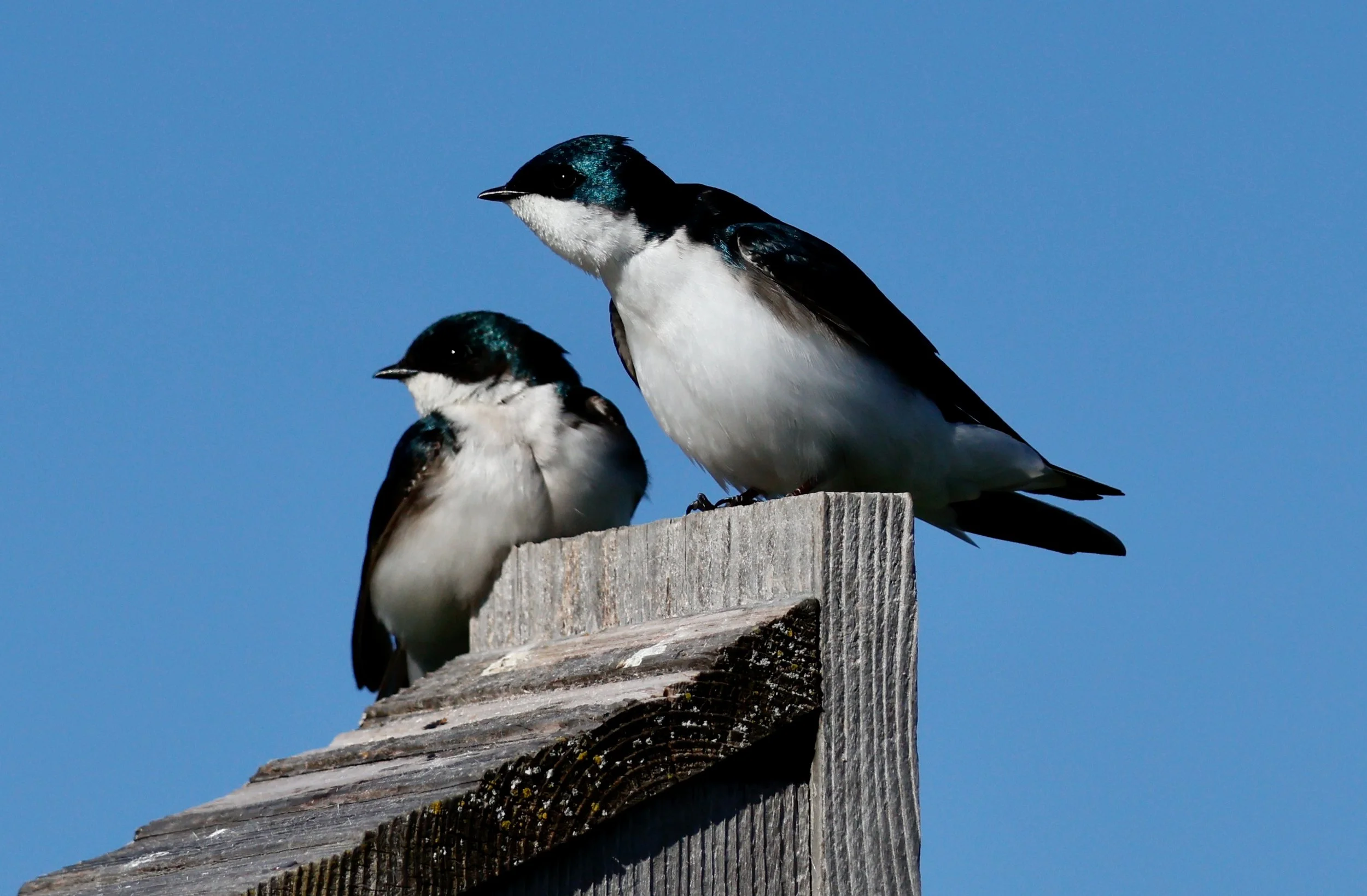






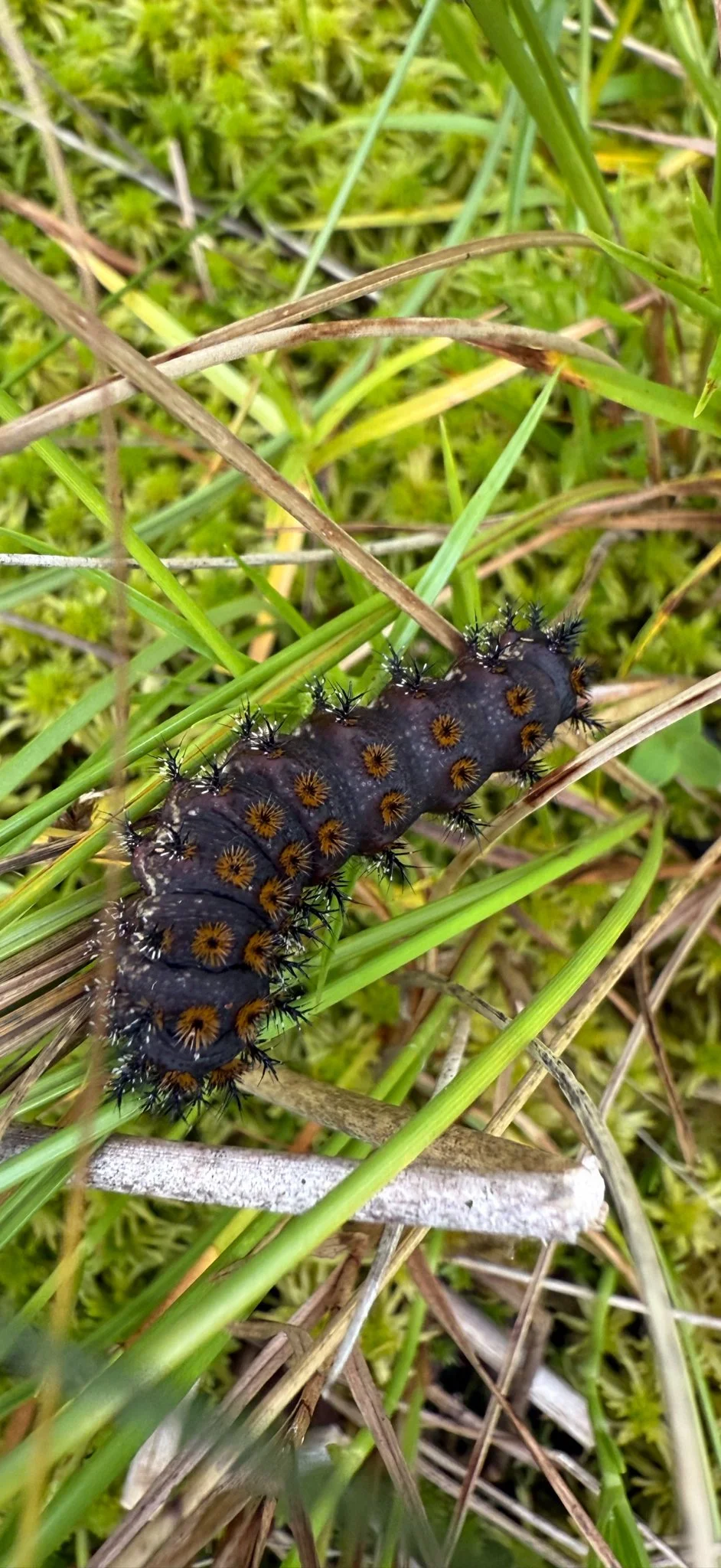


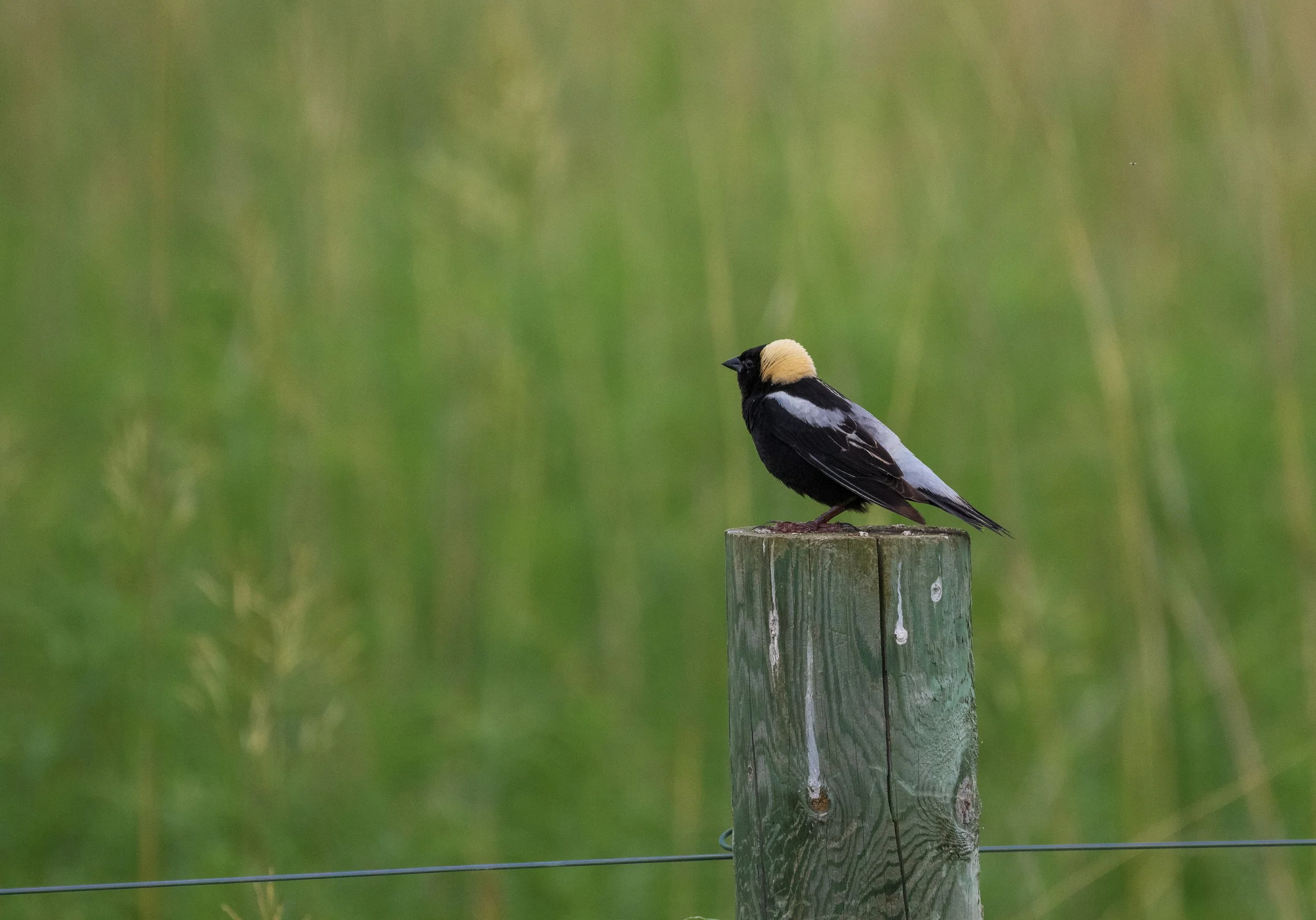

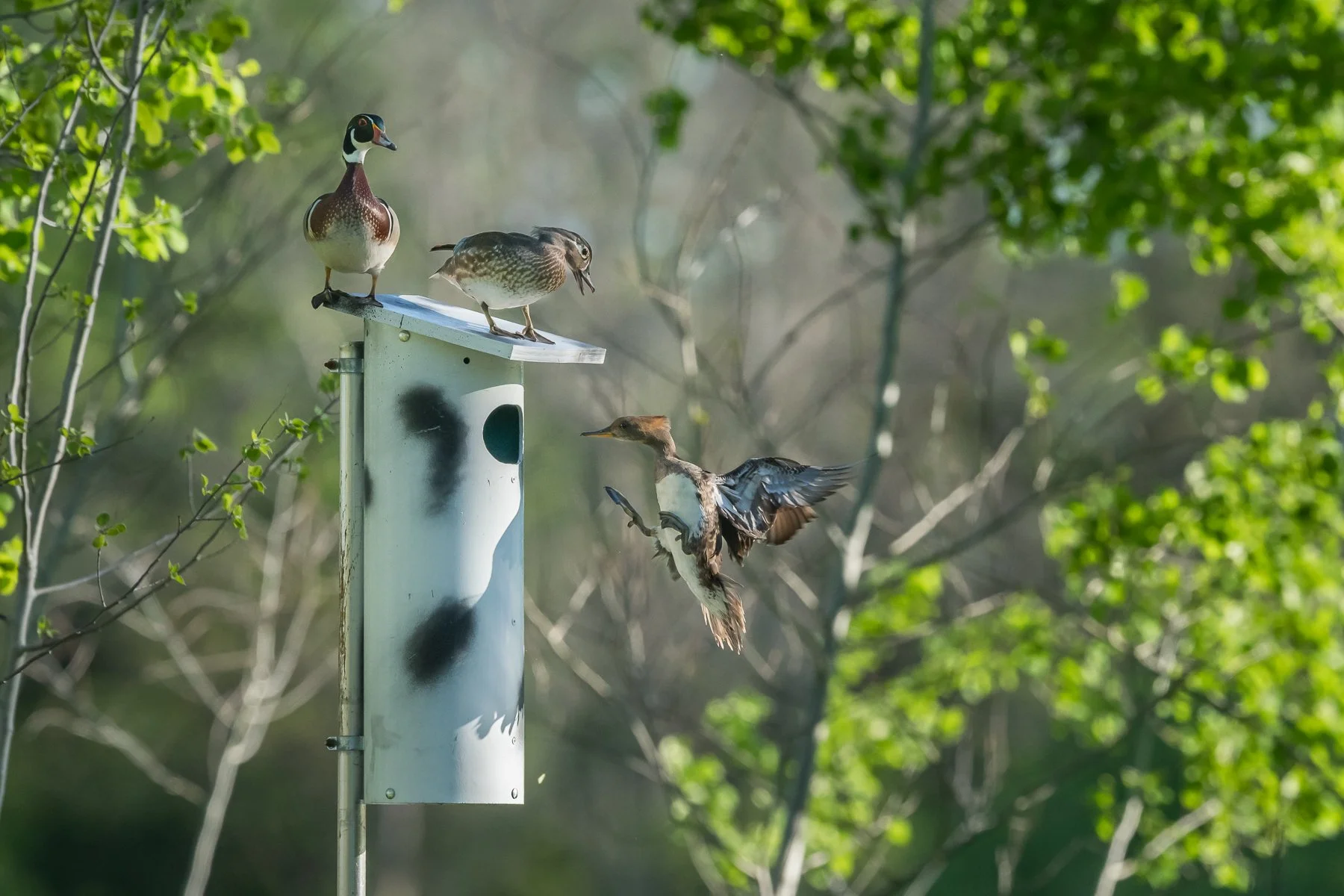





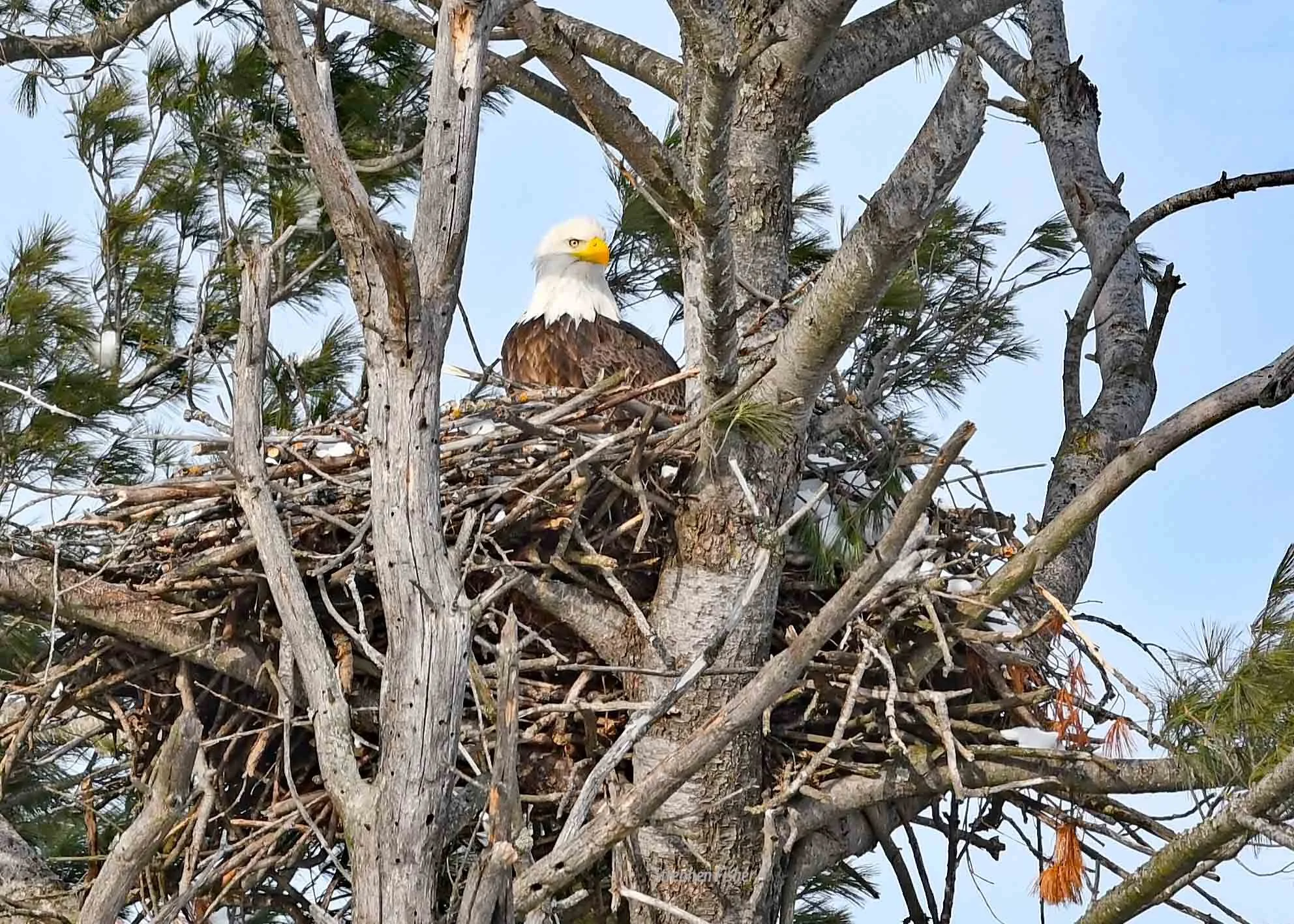
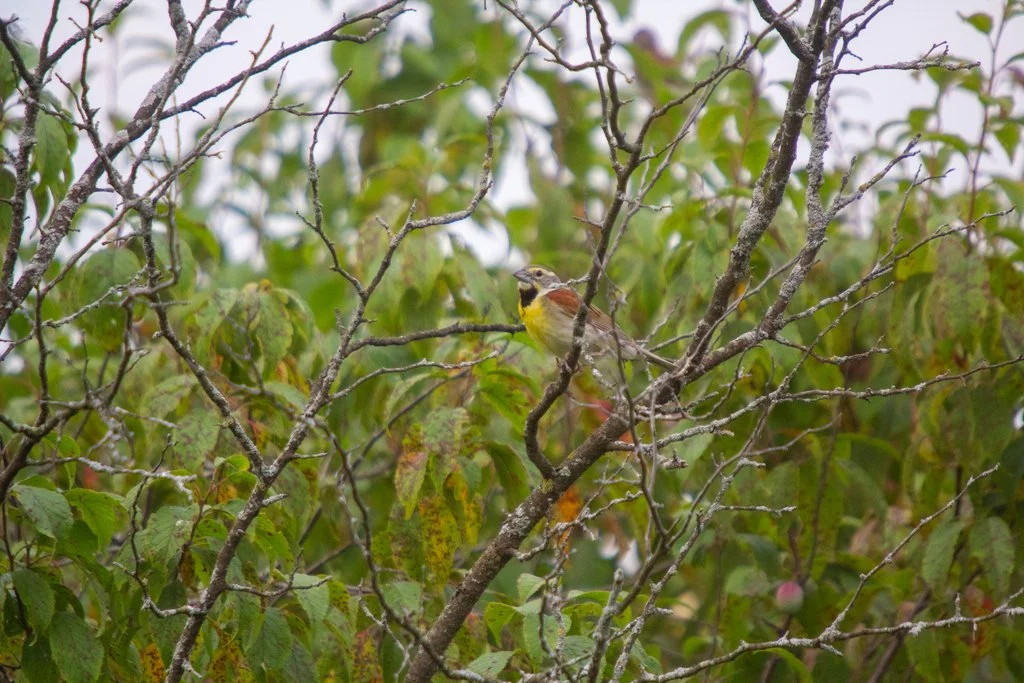






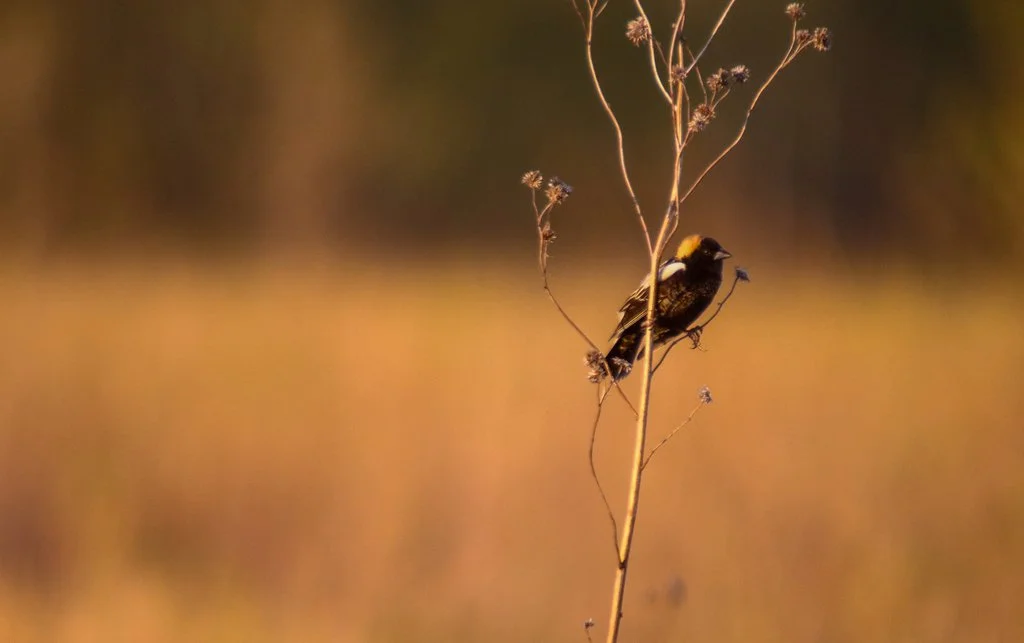




Now that the hush of winter is falling over the landscape, birders yearn for the chirping symphony of spring. But the bare trees and quiet air provide an opportunity for some more discreet birds to shine, such as the Brown Creeper.
photo by Andy Reago & Chrissy McClarren